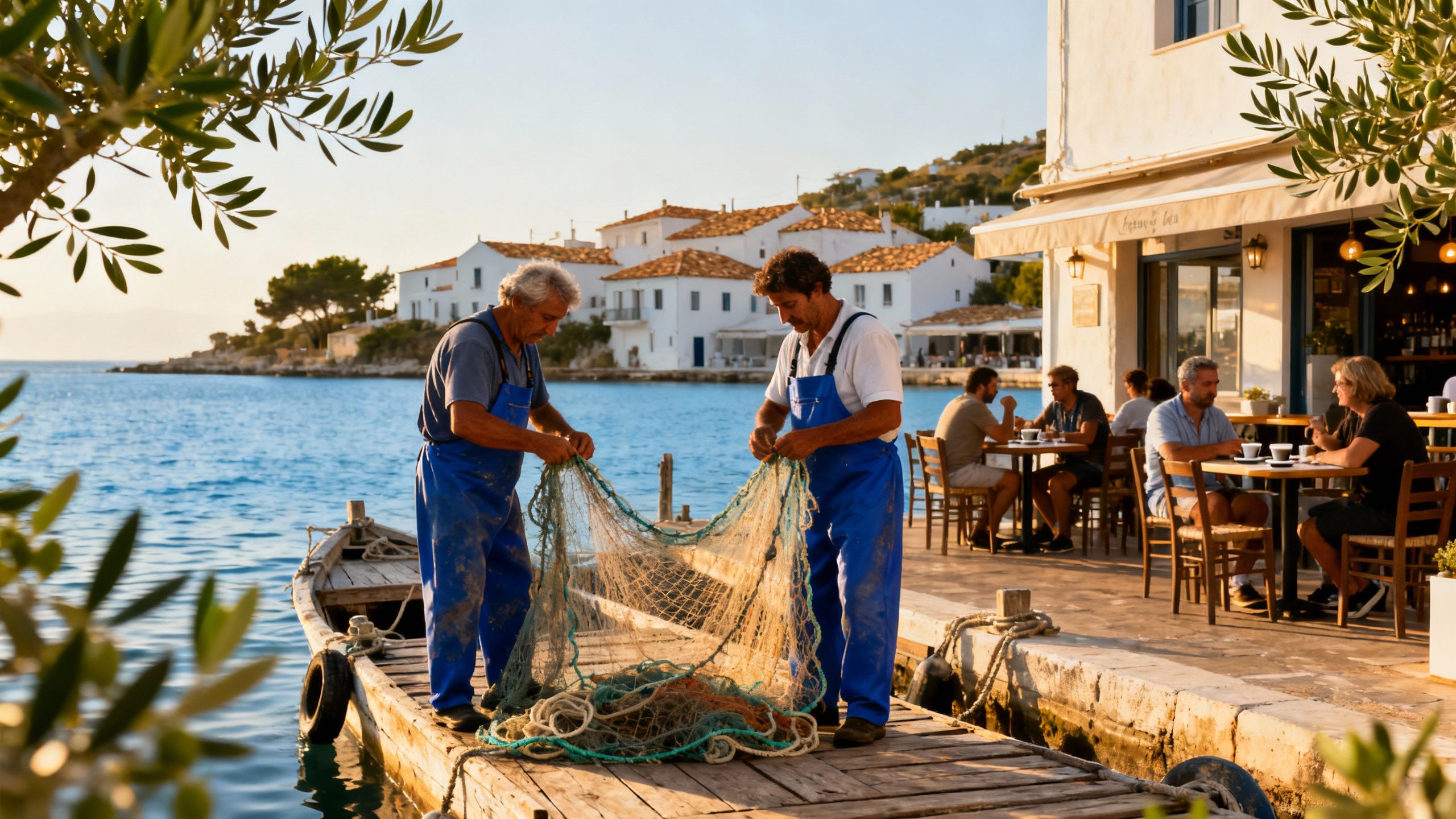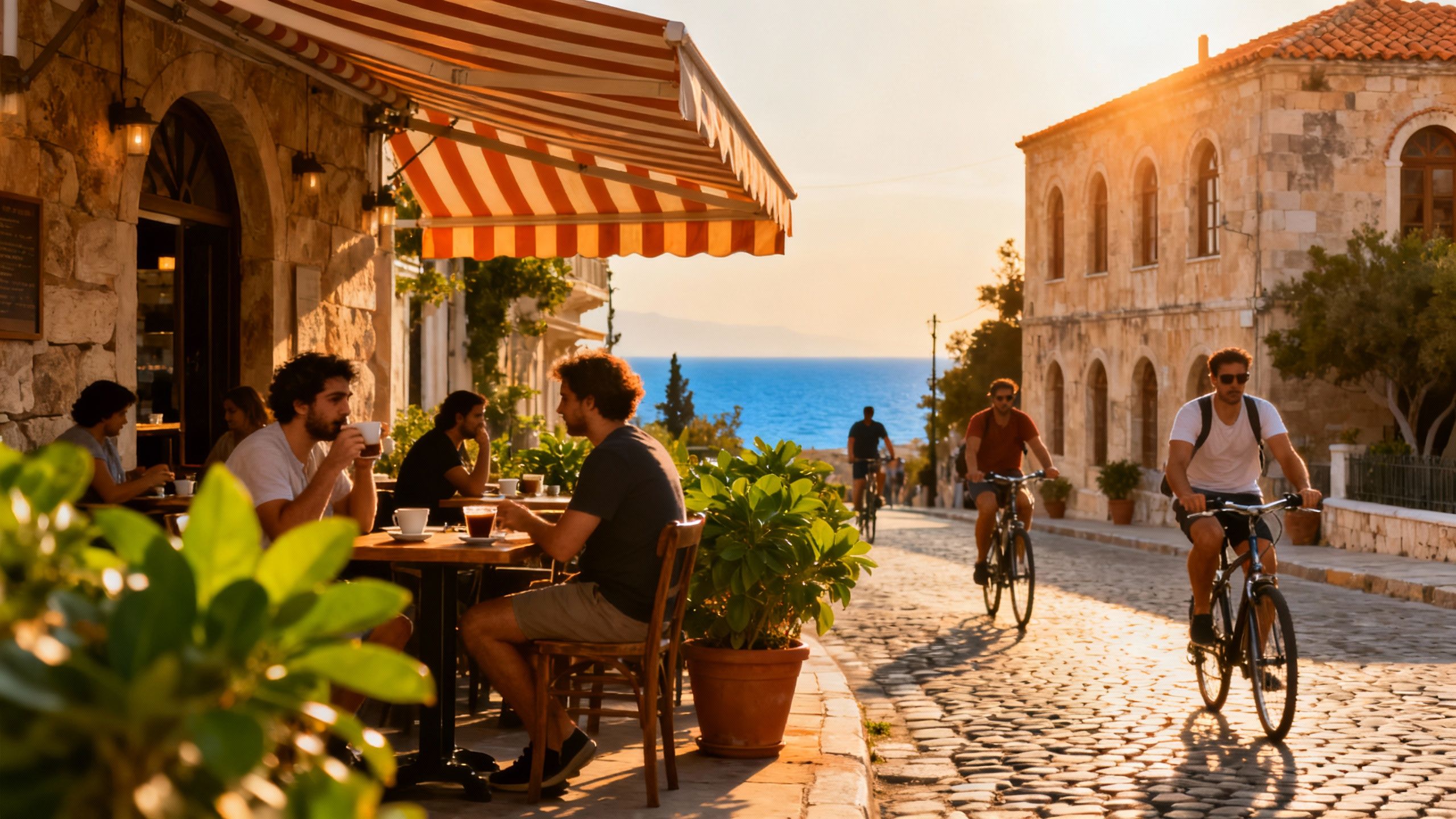Why Winter House‑Hunting in Croatia Wins
Why visiting Croatia off-season changes negotiation power and stewardship choices; market data shows coastal premiums but shoulder-season tactics reveal real value.
Imagine a November morning in Split: café terraces steaming, fishermen hauling in small catches, and narrow stone streets smelling of roasted chestnuts. That quieter, shoulder-season rhythm is exactly when many of Croatia’s most careful buyers find the truth about neighbourhoods: fewer distractions, clearer negotiations and homes that show their year-round personality. This guide pairs that lived-in Croatian life with practical closing and stewardship moves—so you arrive ready to love the place and steward it well.
Living the Croatian rhythm

Croatia moves with the sea and the seasons. Along the Adriatic, mornings begin with a fisherman’s call and the hush of off-season beaches; inland, markets pulse on Saturdays and vineyards close down for pruning in winter. Life here is sensory — stone warmed by sun, pine-scented sea breezes, and markets where produce dictates the week’s menu. For buyers who care about stewardship, that rhythm reveals which properties cycle well with nature and neighbourhood life, not just summer postcards.
Coastal villages, market towns and city quarters
Each place in Croatia has a distinct cadence. In Dubrovnik’s Ploče and Lapad you feel the tourist swell and the private coves nearby; Split’s Veli Varoš and Bačvice are a mix of local cafés and seaside rhythms; Zagreb’s Dolac market mornings are entirely different — brisk, social, and agricultural. These differences matter when choosing a property to steward: a stone house in a fishing village may need salt‑tolerant finishes, while a townhouse near Dolac benefits from a small, productive courtyard garden.
Food, festivals and small rituals
Seasonality shapes social life: truffle hunts in Istria, summer island regattas, and autumn olive harvests that bring neighbours together. Croatia has been expanding its shoulder and off-season appeal, with government figures showing growing arrivals outside peak months — a sign that properties are lived in for more than two months a year. As you imagine weekdays and weekends, think about how local rituals will fill your rooms and gardens through the year.
- Lifestyle highlights to scout in person
- Morning at Dolac Market (Zagreb) — buy seasonal vegetables, meet producers and test local pantry needs.
- An evening espresso on Split’s Riva — observe foot traffic, noise levels and neighbour routines.
- A winter walk on an Adriatic harbour — check coastal exposure, drainage, and how a property weathers off-season storms.
- A visit to a local olive mill or winery — understand land quality and small‑scale stewardship opportunities.
Making the move: practical considerations with a seasonal lens

The market feels competitive: asking prices rose noticeably across 2023–2024 and coastal hotspots command premiums, but inland and less touristed counties remain far more affordable. That price pressure makes timing and negotiation tactics important — and shoulder‑season viewings often produce clearer negotiating power because sellers can see how a property performs beyond sunlit summer days.
Property styles and how they shape stewardship
From Venetian stone houses in Hvar to modern, low‑energy villas near Istria, each building type asks for different care. Traditional stone houses reward natural-material repairs and passive cooling, while modern builds may offer solar-ready roofs and better insulation. When closing, ask for recent energy bills, roof condition reports, and any prior coastal-weather damage — these small checks steer you toward a property that fits your stewardship goals.
Working with local experts who live the season
Choose agents and surveyors who show you how a home behaves through the year, not just how it photographs in July. Local notaries, architects experienced in stone repair, and property managers who understand long‑term renting vs stewardship make the closing process smoother. A good local team helps translate lifestyle hopes into negotiable items — like including a clause for remedial works or a seasonal inventory of garden needs.
- Practical, lifestyle-focused closing steps (season-aware)
- Visit off-season to test heating, drainage and noise (don’t rely on summer visits alone).
- Request a weather-and-wear survey that documents salt, moisture and roof integrity.
- Negotiate stewardship items: immediate repairs, a winterization checklist, and a property handover inventory.
- Agree on post-sale property management options and clarify any short-term rental status with local rules.
Insider knowledge: contrarian truths expats learn the hard way
Expat newcomers often assume coastal popularity equals year‑round income or effortless resale. But recent policy shifts in Croatia are explicitly rebalancing short‑term rentals and leaning on property taxes to ease housing pressure for residents. That means stewardship decisions — whether to keep a seasonal rental, convert to long‑term letting, or use the house primarily for family life — affect both the closing conversation and long-term cost calculations.
Cultural cues that change where you buy
Croatians value local ties and reciprocity: a neighbour who tends your garden matters as much as municipal permits. In towns like Rovinj or Šibenik, being part of the community — attending local festivals or buying from the corner konoba — opens doors and keeps a property alive year after year. When you close, invest time in those social steps; they’re part of stewardship and protect the value of your home.
Long-term stewardship: beyond maintenance
Stewardship in Croatia means designing for seasons: plant windbreaks for winter bura winds, choose tiles for salty air, and favor native Mediterranean plants that need little irrigation. Consider solar hot water, rainwater capture for gardens, and repair-minded finishes (lime plaster, oiled wood) that age gracefully and reduce replacement cycles. Those choices lower running costs and keep your home feeling authentic over time.
- Stewardship checklist (sustainable, practical)
- Assess roof and rainwater drainage for winter storms.
- Specify low-maintenance, native landscaping to reduce irrigation.
- Plan for salt-resistant fixtures on the coast; choose natural finishes inland.
- Document a seasonal maintenance calendar with your property manager.
These stewardship moves protect both the lifestyle you bought into and the long-term value of the house — a gentle, practical form of local care that also earns respect from neighbours.
Conclusion: love the life, then close with care. Visit beyond the summer postcards, bring a team who understands seasons and stewardship, and make closing terms that bake in repairs, winter checks and management. Do that, and you’ll own more than a Croatian address — you’ll hold a living place that gives back to you and the landscape.
Danish relocation specialist who moved from Copenhagen to the Algarve; supports families with seamless transitions, local partnerships, and mindful purchases.


